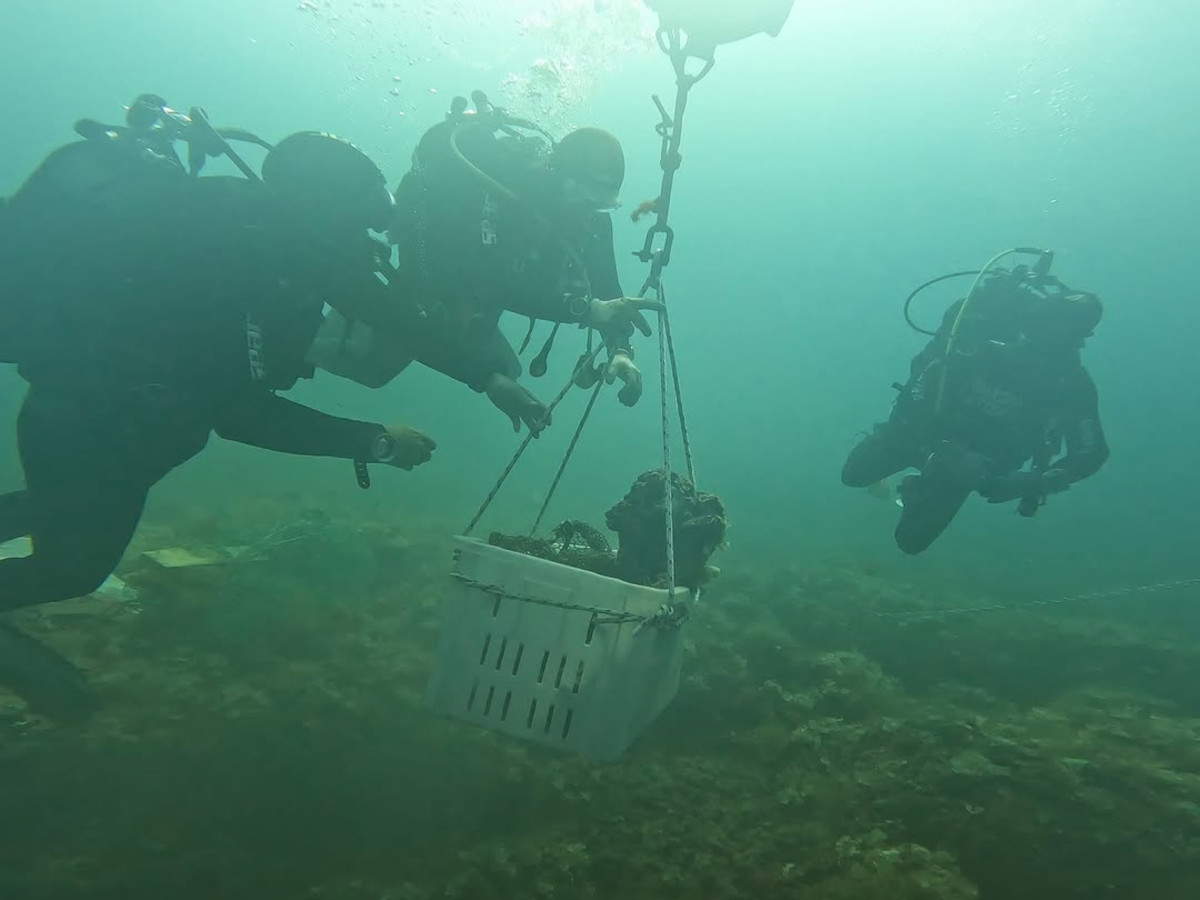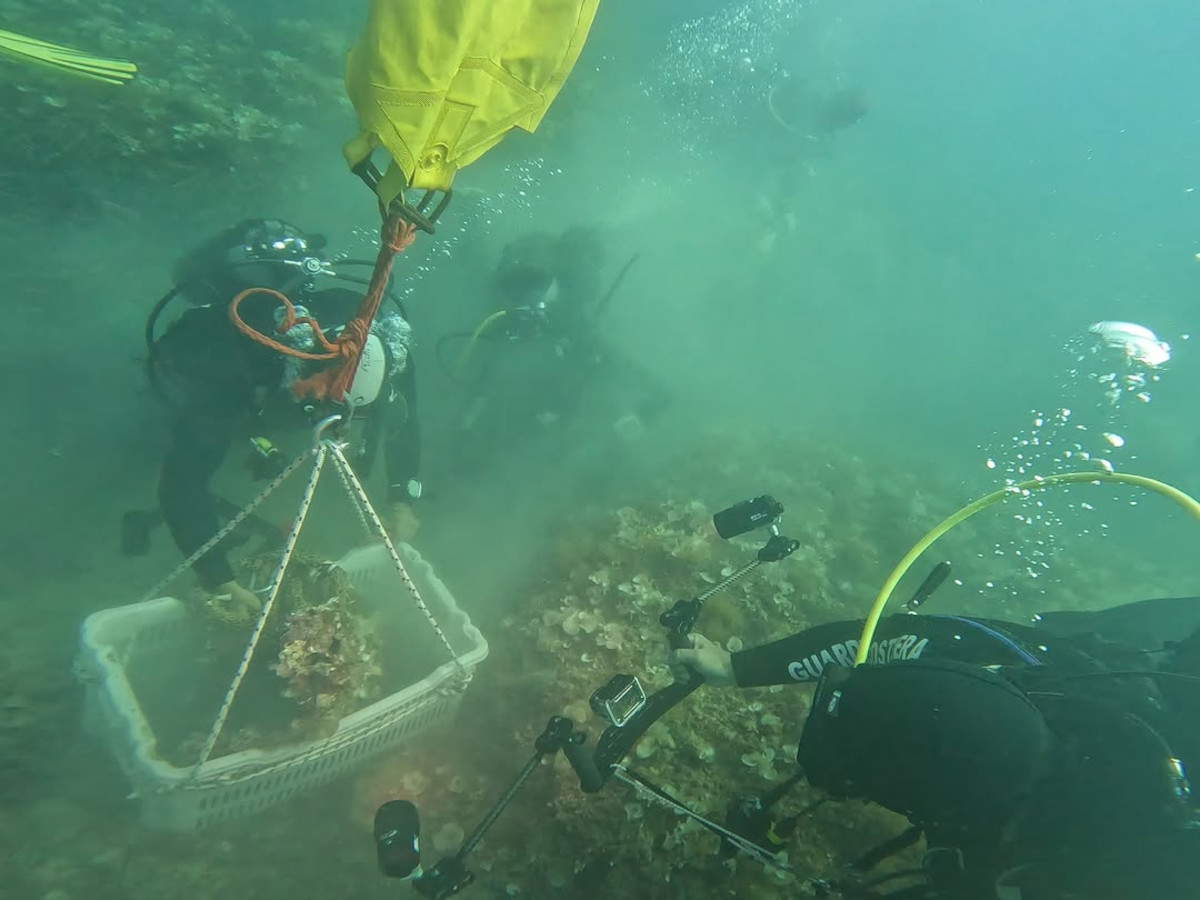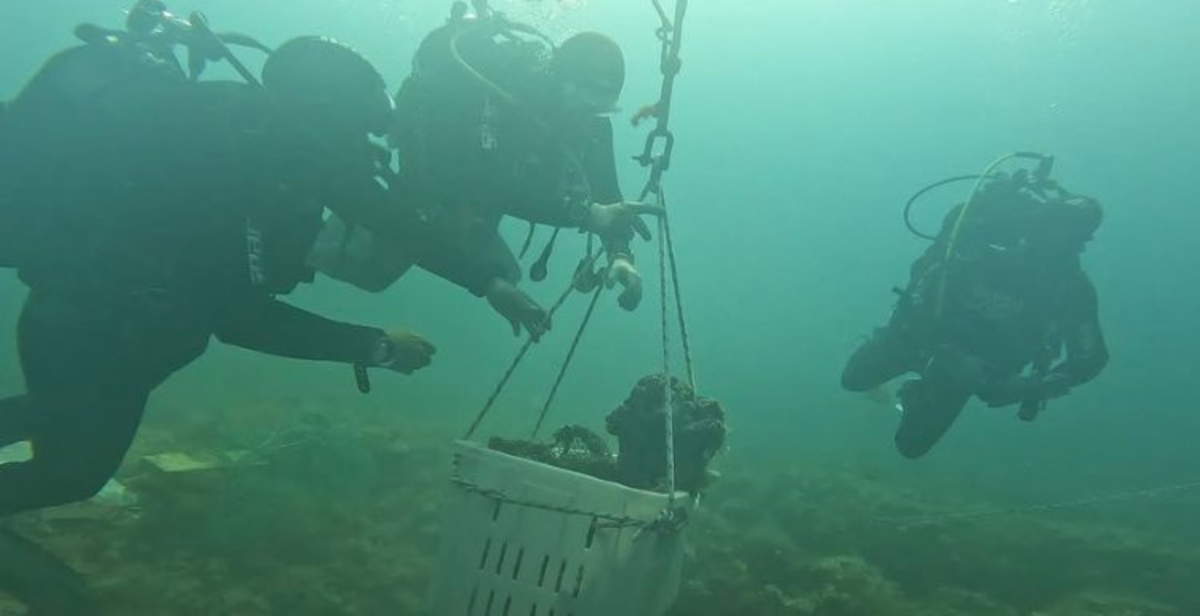The waters off Leuca harbor have returned a fragment of a bronze statue, presumably part of a male torso from the Roman period. The find emerged during anunderwater archaeological survey conducted by the Department of Cultural Heritage of the University of Salento along the stretch of coast between Leuca and Novaglie. The operation, made possible thanks to the authorization of the Soprintendenza Archeologia Belle Arti e Paesaggio for the provinces of Brindisi and Lecce and regulated by an ordinance of the Gallipoli Harbour Master’s Office, represents one of the most remarkable results of the activities led by Professor Rita Auriemma. The latter, in addition to directing the Underwater Archaeology Group of the Salento University, is the scientific head of the M.Ar.E.A. project, funded under the PNRR.
“This intervention,” comments Professor Auriemma, “confirms that the virtuous synergy between institutions is the winning key for research and heritage enhancement, especially for an apparently ”invisible“ heritage such as the underwater one; a network of involved actors and communities can really make it a common and accessible asset.”

The survey is part of the activities to update the Geodatabase of the Underwater Archaeological Map of Southern Apulia. It was in this context that the team was able to precisely locate the site of an ancient cargo of bronze scrap, which had already been known to the scientific community since 1992. It was then that Francesco Boaria first reported the presence of the deposit, which was later investigated by the Superintendence between 1994 and 1995. From that area come numerous fragments of statues, including large ones, now kept at the Archaeological Museum of Brindisi, together with finds from the load of Bronzes from Punta del Serrone. The centerpiece of the recent campaign coincided with the June 19 discovery of an important bronze fragment. The piece, measuring 105 x 65 centimeters, was documented through a photogrammetric survey. Although the surface of the find has marine encrustations that make it difficult to read immediately, its morphological characteristics make it compatible with the front part of a nude male torso, made on a larger than life-size scale. Alongside this, smaller fragments were also recovered, one of which was interpreted as a drapery flap.
The recovery was carried out by underwater archaeologists from the University of Salento, with operational support from the I Nucleo Subacqueo of the San Benedetto del Tronto Coast Guard. On the protection side, Superintendent Architect Francesca Riccio and archaeological officer Serena Strafella also actively collaborated. Their intervention became necessary the moment it became apparent that the finds needed to be brought to the surface. The operation was able to rely on a now well-established collaboration between the university and the Superintendency, which have been working in synergy for years to ensure the safety of underwater activities along the Salento coastline. Fundamental also was the role of the Gallipoli Port Authority, which, through the Local Maritime Office of Leuca, provided transport of the finds from the area of discovery to the mainland. Once again, coordination between research bodies and institutions in charge of controlling the maritime territory proved essential to the success of the operations.

“This is,” says Superintendent Francesca Riccio, “not only a remarkable find for the intrinsic cultural values of the artifacts unearthed, but a further, very important, testimony to the history of this extraordinary territory where archaeological research has accustomed us to continuous discoveries of buried or submerged heritage that, on a daily basis we find ourselves unveiling, protecting and enhancing thanks, as in this case, to the effective collaboration with the institutions involved.”
At the moment, the artifacts are at the Superintendence’s Restoration Laboratory in the Museum of the Ancient Sea in Nardò, where they are undergoing a desalinization treatment in water exchange tanks. Only at the end of this delicate conservation phase will it be possible to proceed with the specialized studies necessary to establish whether the main fragment belongs to one of the statues already known in the context of the Leuca load or whether it is an unpublished one, capable of further enriching the region’s cultural heritage. In any case, the discovery offers new elements for understanding the trade routes that crossed the lower Adriatic in ancient times. The cargo identified in the waters of Leuca, like that of Punta del Serrone, seems in fact to refer to the practice of transporting and recycling metal materials, particularly bronze. Statues and decorative elements were disassembled and transferred from one location to another to be melted down and reused, according to an economic logic that involved the systematic recovery of precious metals.

On the sidelines of the operation, the Commander of the Gallipoli Port Authority, Captain Francesco Perrotti, highlighted the importance of the work done, with explicit reference to the contribution made by the Coast Guard. He also extended thanks to the diving operators of the 1st Diving Unit of San Benedetto del Tronto, coordinated by Lieutenant Commander Giuseppe Simeone, for their role in ensuring the safety of operations and the protection of the marine environment.
 |
| Bronze fragment resurfaces in Salento: new archaeological discovery off the coast of Leuca |
Warning: the translation into English of the original Italian article was created using automatic tools. We undertake to review all articles, but we do not guarantee the total absence of inaccuracies in the translation due to the program. You can find the original by clicking on the ITA button. If you find any mistake,please contact us.